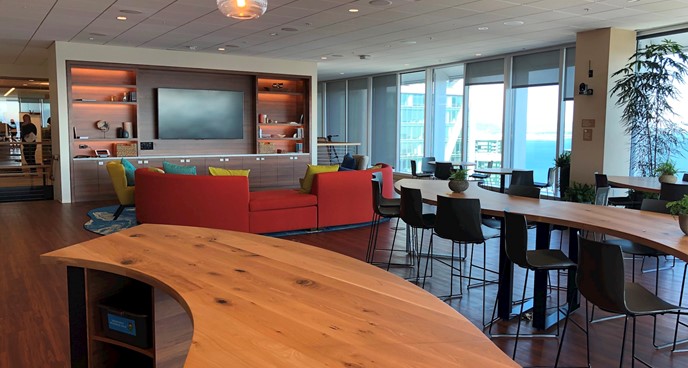Every organization is currently reimaging their office. Back in March, all non-essential businesses sent their employees home to work remotely. With some companies like Google extending their remote work policies through summer 2021, this puts one of the largest investment organizations make at odds.
While office space is typically one of the top ways that companies can invest in their workers, this is becoming increasingly difficult to measure due to increased flexibility and mobility for employees. We’ll talk all things office occupancy post-COVID-19 in this blog post. Keep reading!
Will people go back to the office?
Companies have been surprised – not everyone wants to go back to the office. Previously, companies used to make themselves more appealing to Millennials by offering cools office snacks and beer taps. Now? Well, not offering remote work may hurt them drastically.
The Boston Globe recognized the unique situation that many companies are facing in Many Workers Will Never Go Back to the Office Post-Coronavirus. For instance, co-founder of travel software firm Lola.com Paul English has realized that most of his 80 colleagues won’t return to the office at all. Only about 25 have expressed interest in wanting to return, so the company decided to let employees work from anywhere as long as they worked in Eastern Standard Time for consistency.
This is how many companies are handling it – either based on safety, employee preference, or money. With the pandemic still raging, it’s a big expense to pay when most employees either like working from home or would rather practice precaution and avoid going into the office.
What will offices look like post-COVID-19?
Wait, so is that it? Will workplaces seek to exist post-COVID? Safety was the primary principle driving everyone out of the office, and it’ll ultimately be the driving force to get everyone back in the office. Here’s how companies can restore office occupancy if they’re interested in doing so once the pandemic has passed.
- Install health-driven features
You’ve likely heard of the impressive upgrades that some offices are already installing. For example, touchless and hands-free designs that help to limit (or entirely eliminate) contact with high-touch surfaces. The less people have to touch the surfaces all their coworkers touch (elevators, entrances, shared spaces, etc.), the more likely they are to feel comfortable returning to the office.
If your office boasts, motion sensors, voice recognition, or other features that create a cleaner and safer workplace, this eliminates a lot of anxiety that employees feel about exposing themselves to others on a daily basis.
You should also amend your sanitization protocol if you haven’t already. Knowing that the office space gets a deep cleaning daily can help alleviate fears.
- Create a human-centric work experience
As English noted above, companies may only have 30% of the office wish to return. If that’s the case, the office no longer needs to harbor individual workspaces. Rather, they can be transformed into spaces that drive collaboration for those who want to re-enter the office or come in occasionally.
- Evaluate the real estate market
This does come down to money. As an organization, you may save money by downsizing your office space if all or most of your staff choose to work from home. Run the numbers before making any decisions about resigning a lease and remember that you may need to implement 6-feet physical distancing between employees who do want to use the office.
If you’re unclear on what your employees prefer, be sure you poll them before making a final call.
When should my company reopen the office?
This isn’t an easy question to answer, but here are some questions you can reflect on before moving forward.
- How can we safeguard employees and visitors who come to the office?
- How can we facilitate business continuity in an uncertain environment?
- What systems can we have in place should there be an outbreak?
- How can we manage shifting business, regulatory, and government requirements?
- How can the office support employee productivity? Is the office better equipped for this than remote work?
- How can we monitor employees and their experiences?
- Is this a cost-effective move for the company? Will our space be used efficiently and beneficially, or is remote work a better option?
Final thoughts
The office has been impacted drastically by COVID-19. While remote work was implemented to ensure employee safety, this new normal has left companies wondering if they should keep their office space at all. Is it worth it to invest in expensive office space when no one is using it? When will it be safe to return? What will office occupancy look like post-COVID-19? There’s a lot of uncertainty in the air, and we won’t know the outcome until months from now.







